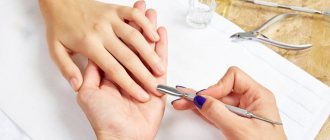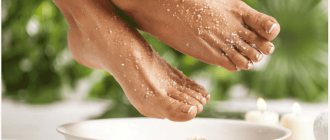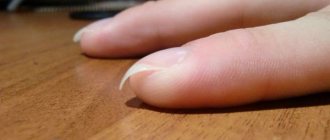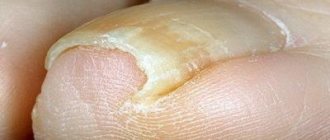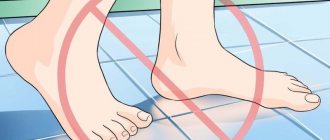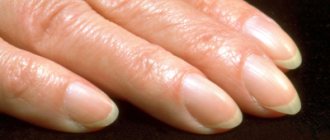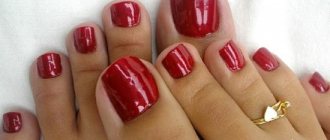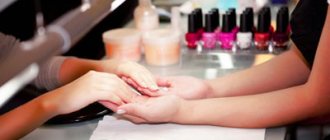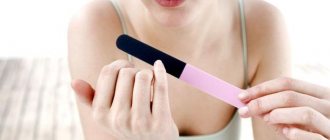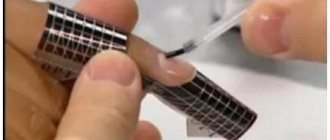In some nail diseases, the plates become so deformed that they interfere with normal walking and greatly reduce the quality of life. One of these diseases is onychogryphosis. This is a condition with severe changes in the nail plate, when its shape begins to resemble a bird's claw. The pathology has to be treated surgically, but therapy at home is also possible.
Description and features
Onychogryphosis is more often observed in elderly and senile people, but for a number of reasons it can appear even in children. The incidence of onychogryphosis in athletes is slightly higher. In medical practice, such nail damage is classified as dystrophic and, in comparison with other onychodystrophies, is rarely recorded.
Onychogryphosis is understood as hypertrophy (thickening) of the nail plates, compaction and torsion of the layers of the nail, in which they begin to resemble a bird's claw. In parallel, the patient experiences pathological changes in the skin, periungual tissues, and nail bed. The disease develops mainly on the legs, and rarely affects the fingernails.
Bird's claw nails are not only a serious aesthetic problem. Patients cannot wear regular shoes; at the same time, transverse flat feet occur. People experience pain when walking, especially in the advanced stages of onychogryphosis. The quality of life inevitably decreases, because the disease requires urgent medical intervention.
Symptoms of thickening on the legs
Many people live for years with increased thickness of toenails and do not even suspect that this is a violation of the norm. Healthy toenails should not be much thicker than those on your hand. The functional size of the stratum corneum of the plate rarely exceeds 2 mm , and the minimum thickness starts from 0.5 mm . When trimmed, the toenail plate cannot require more effort or any particularly strong tool. The nail itself should be clear, slightly pink, but not completely dull white or yellow.
Thickening of the nail is often accompanied by a change in color
Thickening of the stratum corneum for any reason often causes a change in color - darkening or yellowing of the nail, and only later does an increase in the size of the plate occur. The transformation can take different forms: nails grow only laterally or suddenly gain vertical thickness, as with onychogryphosis.
A uniform increase in the stratum corneum over the entire surface can be small, 3-4 mm, or have an impressive size - 1 cm or more. Thickening of the nail in older people should not be attributed to age-related changes - it may be a disease not related to the years lived.
Regular self-diagnosis is good for health, but the final verdict must be made by a physician. Fungal diseases of the nails are dealt with by a mycologist, but in other cases there is no need to consult a dermatologist.
There are dozens of diseases that can cause thickening of the nail plates. Some of them are infectious, others are somatic, and some are congenital. Some diseases can be cured or stopped, but there are a number of causes of thick nails that cannot be permanently changed.
Classification and symptoms
The disease may start not with changes in the nail, but with unpleasant sensations in the area of the nail plate: pain, itching, discomfort when putting on shoes, when walking. Such symptoms manifest themselves especially strongly in the area of the thumb, and become stronger when pressed or squeezed.
Subsequently, the disease develops according to the following stages:
- Early (mild) stage. The nail begins to gradually thicken. The color changes from normal to gray, yellow, and less often black. Next, the affected nail plates become convex, rise above the nail bed, and tubercles and roughness appear on their surface. Removing and cutting nails is very difficult due to their abnormal thickness.
- Late stage. Deep stripes form on hypertrophied nails: transverse and longitudinal. The deformation intensifies, the nail begins to twist and bend inward, the plate more and more resembles a griffin's claw. The length of the nail sometimes reaches several centimeters, and pus often appears, which is combined with an extremely unpleasant odor. The person suffers from severe pain and is unable to wear shoes. At the most advanced stage, it is impossible to move independently.
The shape of the affected nail can be spiral, screw, horn-shaped or curved down. Classification involves dividing all cases of onychogryphosis into acquired and congenital. This gradation is important because it determines the treatment.
Symptoms of onychogryphosis
The disease can be either congenital or acquired. This classification is necessary to prescribe adequate therapy for the pathology. Specific symptoms of onychogryphosis are pronounced thickening, twisting of the nail, changes in its transparency, severe discomfort when wearing any shoes. Clinically, it is customary to distinguish two stages of the pathological process:
- Early – at this stage, the clinical picture of the disease is manifested by pain in the soft tissues under the nail. Unpleasant sensations intensify with the slightest pressure. As onychogryphosis progresses, the nail gradually thickens. As a result, an unnatural growth is formed. At the same time, the plate darkens, becomes dense and difficult to process.
- The late stage is characterized by the appearance of deep longitudinal and transverse stripes on the hypertrophied nail. The color of the plate becomes dirty yellow. The horny layers begin to twist. Treatment of a nail affected by onychogryphosis is possible only after preliminary softening. In rare cases, a screw or spiral direction of nail growth is observed.
Article on the topic: Attention deficit disorder in children - causes and symptoms, diagnosis, methods of treatment and correction
Causes of onychogryphosis
It is believed that the disease can be triggered by a variety of factors, from external to internal, which act on the body throughout life. Often the cause is a previous injury, burn, frostbite or wearing shoes that compress the toes. Then a swelling or hematoma forms under the nail, which disrupts the nutrition of the nail matrix.
Due to the impregnation of cells with edematous fluid, they thicken and metabolism changes. Gradually, the horn cells begin to rapidly divide, one layer of them outpaces the other in growth. As a result, hyperkeratosis occurs, and the nail takes on the appearance of a crimped bird's claw.
Approximately the same processes occur when other factors influence the body:
- regular use of acetone, low-quality varnishes, damage to the nail by other chemicals, including household chemicals;
- eczema and local skin infections, dermatoses, keratoses;
- diseases of the thyroid gland and diabetes mellitus (directly disrupt metabolism);
- vasculitis, varicose veins, neuritis of peripheral nerves.
Onychogryphosis may well develop with dermatological diseases - nail psoriasis, mycosis (fungus) of the nails. With syphilis and tuberculosis, nail pathology may occur. Medicine describes cases of hereditary forms that are almost impossible to cure - their cause is gene mutations.
Why is onychogryphosis diagnosed more often in older people? The reason is the physiological aging of the skin with impaired nutrition of the nail bed. When the amount of moisture and fat in the nail matrix decreases as it thins, some blood vessels stop functioning. As a result, trophic changes and disturbances in the chemical composition of the nail occur, which leads to hyperkeratosis. Much more often, onychogryphosis develops in people over 70 years of age in combination with varicose veins and other vascular diseases.
Drug therapy
The course of treatment is selected individually according to the stage and etiology of the disease. The main direction of complex drug therapy for onychogryphosis is the elimination of factors that provoke malnutrition of the nail bed. Based on the results of laboratory tests, the fungal or genetic nature of the disease is established. In the first case, the podiatrist prescribes local antimycotic drugs, retinol, ichthyol ointments.
In some situations, the use of hormonal therapy is indicated. For onychogryphosis of the nails, oral medications are additionally prescribed. As a rule, doctors recommend vitamin and mineral complexes containing zinc, selenium, calcium, silicon and other elements necessary for the body. In general, drug treatment of onychogryphosis of nails is carried out:
| Pharmacological group | Expected therapeutic effect |
| Antifungal drugs (Mikospor, Lotseril, Ketonazole, Intraconazole, Batrafen) | Structural and functional damage to the membrane of pathogens |
| Antibiotics for topical use (synthomycin emulsion or heliomycin ointment, Levomekol) | Preventing or treating a bacterial infection |
| Keratolytic patches (Ureaplast, Salicylic patch) | Softening the stratum corneum |
| Vitamins A, E, C, group B | Stimulation of regeneration processes, improvement of peripheral nerve function |
Therapy for onychogryphosis is aimed at restoring the nail and improving the patient’s condition, which is achieved by partial or complete removal of the affected stratum corneum after special treatment. To soften the plate, a special composition is used - Onycholysin. The basis of the drug is talc (85%) and barium sulfide (15%). Complete nail removal can be achieved after 2-3 procedures. The method of using Onycholysin is extremely simple:
- the medicinal composition is diluted with water to a mushy state;
- apply the drug to the affected nail and leave for 30-40 minutes;
- wash off the product with warm water, while gradually scraping off the softened stratum corneum.
Surgical removal
Radical treatment of onychogryphosis is carried out when conservative treatment methods are ineffective. Surgical removal of the affected nail is performed by scraping the upper stratum corneum of the nail and then removing the affected fragments of the plate. In the absence of a positive result, complete removal of the problem area (eulsion) with simultaneous electrocoagulation of the matrix is indicated. Surgical treatment of onychogryphosis is carried out in one of the following ways:
- Classic - surgery is performed using a scalpel. The classic method of bird claw removal is characterized by high trauma and long recovery. The procedure is performed under local anesthesia. During the recovery period, pain and increased tissue sensitivity persist, which makes it difficult for the patient to move.
- Phenolization - the method involves the elimination of the sprout zone. After this manipulation, the nail does not grow back.
- Radio waves - the procedure is carried out using the Surgitron installation. The high precision of the radioknife allows you to avoid damage to healthy nail tissue. The manipulation requires local anesthesia. After surgery, stitches are not necessary. The treated area heals within a few days.
- Laser – the operation is carried out in three stages. The problem area is first numbed. At the second stage, the nail affected by onychogryphosis is evaporated. The procedure ends with sanitization of the surgical field. The recovery period after laser nail removal lasts 2-3 days.
Folk recipes
When the first signs of onychogryphosis appear, when there is no deformation and the pain syndrome is mild, you should abandon tight shoes and take measures to restore blood supply to the affected area. Warm nail baths with the addition of olive oil and lemon juice will help alleviate the patient’s condition and speed up the process of regeneration of damaged tissue. In addition, you can treat onychogryphosis at home using the following folk remedies:
- Kombucha compresses. First, steam your feet in hot water with the addition of sea salt and iodine. Place a peeled piece of kombucha on the affected nail, secure with a bandage and leave overnight. Carry out the procedure every day before bed for a month.
- Essential oils of tea tree and lavender. Mix the ingredients in equal quantities. Steam your feet, then apply a few drops of the composition to the affected area, cover with a thin bandage and leave the product until the morning. Treat the affected nail for 2 months.
Diagnostic methods
The causes of the pathology can be different, therefore, before starting treatment, it is important to establish them, exclude or confirm the presence of somatic diseases. Sometimes the exact cause of onychogryphosis remains unknown.
For an individual diagnosis, you need to consult a doctor - a dermatologist or podologist. Usually a preliminary diagnosis is made based on the clinical picture already at the initial examination, but for clarification the following examination methods may be recommended:
- consultations with an endocrinologist, surgeon, angiosurgeon, immunologist, allergist;
- blood test for syphilis (Wassermann reaction);
- blood test for glucose;
- scraping for microscopy to determine fungal infection;
- dermatoscopy - examination of nails under magnification.
Hereditary forms of the disease are identified by taking into account family history.
Diagnostics
Prescribing adequate treatment is impossible without establishing the immediate cause of onychogryphosis. As a rule, diagnosing the pathology does not cause difficulties. Identifying the causes of acquired onychogryphosis requires prescribing blood tests for the patient for RW and sugar levels (with syphilis and diabetes, bird claws on toes are not at all uncommon). In the event of a secondary infection, the pathogen is identified by inoculating the discharged pustules and determining sensitivity to antibiotics. In addition, to exclude a fungal infection, it is imperative:
- perform dermatoscopy;
- use a Wood's lamp;
- take a scraping from the surface of the affected plate.
Treatment options
You should get rid of the problem as early as possible, because at an advanced stage, onychogryphosis cannot be completely cured due to irreversible changes in the nail bed. Treatment must be done under the supervision of a doctor - independent measures rarely lead to complete recovery. The doctor will determine effective methods of therapy, the goals of which are:
- improving quality of life, alleviating or eliminating symptoms;
- reduction in nail thickness;
- giving the nail plate the correct shape.
The diseased nail is softened and completely/partially removed, followed by special treatments. Some patients will only benefit from surgery.
Medication
Most cases of onychogryphosis can be cured without hospitalization. The main stage of treatment is removal of the affected nail plates. This is done by softening the nail with a special medical product - Onycholysin paste, which contains talc and barium sulfide in a certain ratio. The drug is sold as a two-component product - a dry powder and a solution, which are mixed together according to the instructions immediately before use.
The prepared paste is applied to the affected nails and left for 40 minutes. Afterwards, the paste is washed off and the nails are removed by scraping. Then the finger is washed, and a drop of iodine or other antiseptic is applied to the remaining nail. Usually, for complete removal, 3–4 procedures are carried out every 2–4 days.
Other methods of therapy that are indicated for the treatment of onychogryphosis (course up to six months):
- taking vitamins and minerals, especially selenium, zinc, vitamins E and A, calcium;
- applying ointments to the area around the nail - retinoic, ichthyol, containing gelatin;
- performing compresses with antibiotics if a secondary bacterial infection occurs;
- application of antifungal varnishes, ingestion of drugs with antifungal components.
Treatment at home
Steaming nails in various solutions or removing damaged plates by applying keratolytic patches is widely practiced. They should include substances such as urea and salicylic acid. Simple lead and complex lead plasters, Ureaplast, and soap-salicylic plasters are used.
Procedure for applying the patches:
- Before using the device, take a nail file. Clean off the top layer of the nail.
- Cover the skin around with a regular plaster to protect against burns.
- Apply a keratolytic plaster to the nail plate.
- Do not remove the patch for 2 days.
- Remove the sheet, remove the top layer of the nail, and if necessary, apply another patch.
- If necessary, use local antifungal agents at the end of treatment.
Surgical removal
Typically, surgical treatment is performed if the toes are affected. Conservative measures are used on the fingernails so as not to spoil the appearance of the first phalanx (after surgery it may change due to sutures). If conventional measures are ineffective, there are no other options other than surgery.
The nail is scraped under local anesthesia or completely removed - avulsion with electrocoagulation of the matrix. Healing after such operations is long and traumatic is high. The pain persists in the first few days after removal, and after that there remains increased sensitivity of the area, interfering with the person’s normal movement.
In severe cases, phenolization is performed in parallel - removal of the growth zone, after which a new nail will never grow. Typically, phenolization is indicated for hereditary forms of onychogryphosis.
Less traumatic methods are laser removal or radio wave excision using the Surgitron device. These procedures are accurate, quick in time, and healing occurs much faster after surgery. The reason is less damage to healthy tissue and no need for sutures.
Folk recipes
There are a number of traditional methods of therapy that help soften the nail and remove it without consequences. Good recipes:
- Kombucha compress. Steam your feet in warm water, adding a little salt. You can use a weak soda solution. Then tie a piece of kombucha and leave it overnight. Carry out treatment daily for 28 days.
- Add 3-4 drops of essential oils (tea tree, lavender) to 10 mg of base oil. After steaming in water, lubricate your nails with oil and cover with a band-aid. Leave it on all night. The course of therapy is up to 60 days.
- Cut an aloe leaf, chop it, tie it to your finger every night. Repeat therapy until the affected tissue is completely eliminated.
Traditional methods of treatment
They are auxiliary, do not cancel the dermatologist’s prescriptions, and almost never affect the cause of onychogryphosis.
Nail baths can be used as an auxiliary option
Kombucha compress.
The nail is pre-steamed in hot water with the addition of a few drops of iodine. The mushroom, cleared of the film, is fixed with a bandage to the sore nail overnight. The compress is applied every night for a month.
Helps with onychogryphosis caused by fungal infection, somewhat less effective with psoriasis. In other cases, the effect is expressed only in a slight softening of the surface layer of the changed nail.
Aloe compress stimulates tissue repair
A mixture of lavender oil and tea tree oil.
After steaming in a soda bath, apply 2 drops of a mixture of these oils to the nail, rub in and apply a patch. The procedure is carried out within 2 months.
It makes sense in a complex of restoration measures when the condition of the nail has already stabilized. Indeed, during this period it is advisable to nourish the matrix and the plate itself with essential oils.
Aloe juice in the form of a compress.
The pulp of the fleshy (lower) leaves is used, it is crushed into a pulp, which is applied to the affected nail. We fix it with a cotton swab of polyethylene and secure it with bandages. The procedure is performed at night for a month.
The compress has a stimulating effect, accelerates tissue regeneration, and also prevents the development of fungal and bacterial infections.
Prevention and recommendations
It is impossible to prevent the disease, especially if there are risk factors. As a preventative measure, it is important to:
- wear only high-quality shoes that fit properly;
- do not allow fungal diseases to develop;
- keep blood sugar under control if you have diabetes;
- prevent long-term existence and progression of varicose veins and trophic ulcers.
Even with minor changes in the nail, you should seek help from a doctor in order to cure onychogryphosis at the earliest stage.
Diagnosis of pathology
Regardless of the cause, onychogryphosis on the fingernails requires systematic treatment. Having noticed the first signs of a change in the shape of the nails, you should consult a podiatrist or dermatologist, who initially conducts a thorough visual examination and clarifies the possible injury.
In addition, the patient is prescribed the following tests:
- Blood sampling to identify the causative agent of syphilis (Wassermann reaction), which can provoke a modification of the plate.
- Measurement of sugar levels, indicating the presence of diabetes mellitus (deformation of nails is not uncommon in this serious disease).
- Scraping the surface of the nail and the skin around it. This helps to determine the fungal component in the cause of the disease, since onychogryphosis on the toenails can be the extreme stage of a mycotic disease.
If the main factor is heredity, then it is almost impossible to cure it.
Causes of onychogryphosis
Onychogryphosis is always associated with a malnutrition of the nail
It should be immediately clarified that the exact mechanism and causes of the development of this pathology are not precisely known. We can only list the factors that provoke the appearance of onychogryphosis. Almost all of these factors are in one way or another associated with impaired trophism (blood supply, nutrition) of the nail plate.
This could be tight shoes, severe bruises, or an unprofessional pedicure.
In addition, any serious disease of the skin or blood vessels of the lower limb can potentially contribute to the development of onychogryphosis: frostbite, diabetes (primarily occurs with diabetic foot), varicose veins, thrombophlebitis and phlebothrombosis, elephantiasis, etc.
A hereditary tendency to this type of manifestation of nail trophic disorder is also among the predisposing factors, but it is not so often possible to find a family tree of at least two relatives with onychogryphosis.
You should not assume that such a condition cannot threaten you because your relatives do not have it.
Onychogryphosis can be a symptom of severe mycoses and psoriasis of the nail. In this case, the trophism of the nail is also disrupted, but detachment does not occur due to individual characteristics - the nail thickens and grows.
Reasons for the development of pathology (photo)
Nail psoriasis Nail fungus Elephantiasis Varicose veins of the legs Bruised big toe Tight shoes
